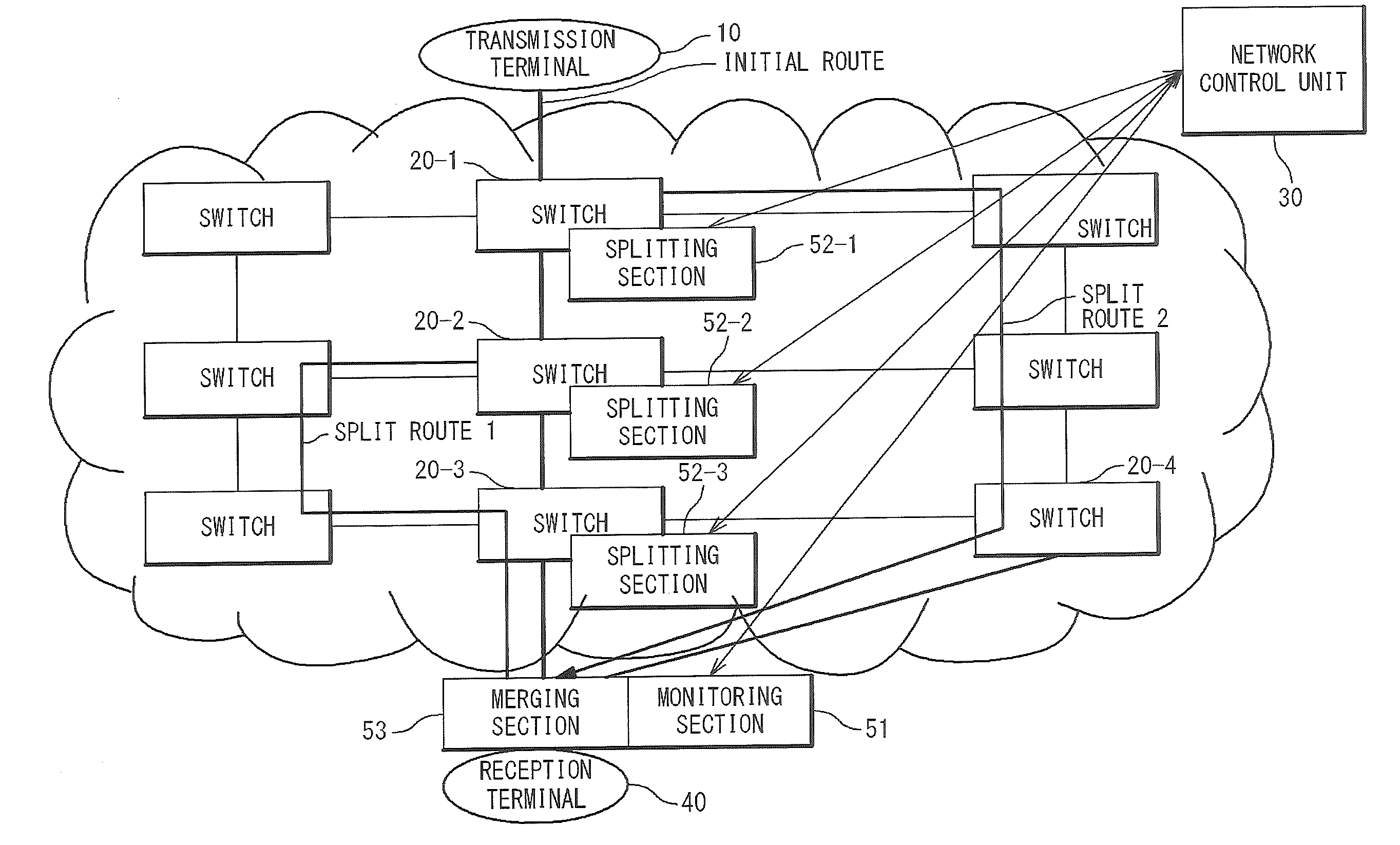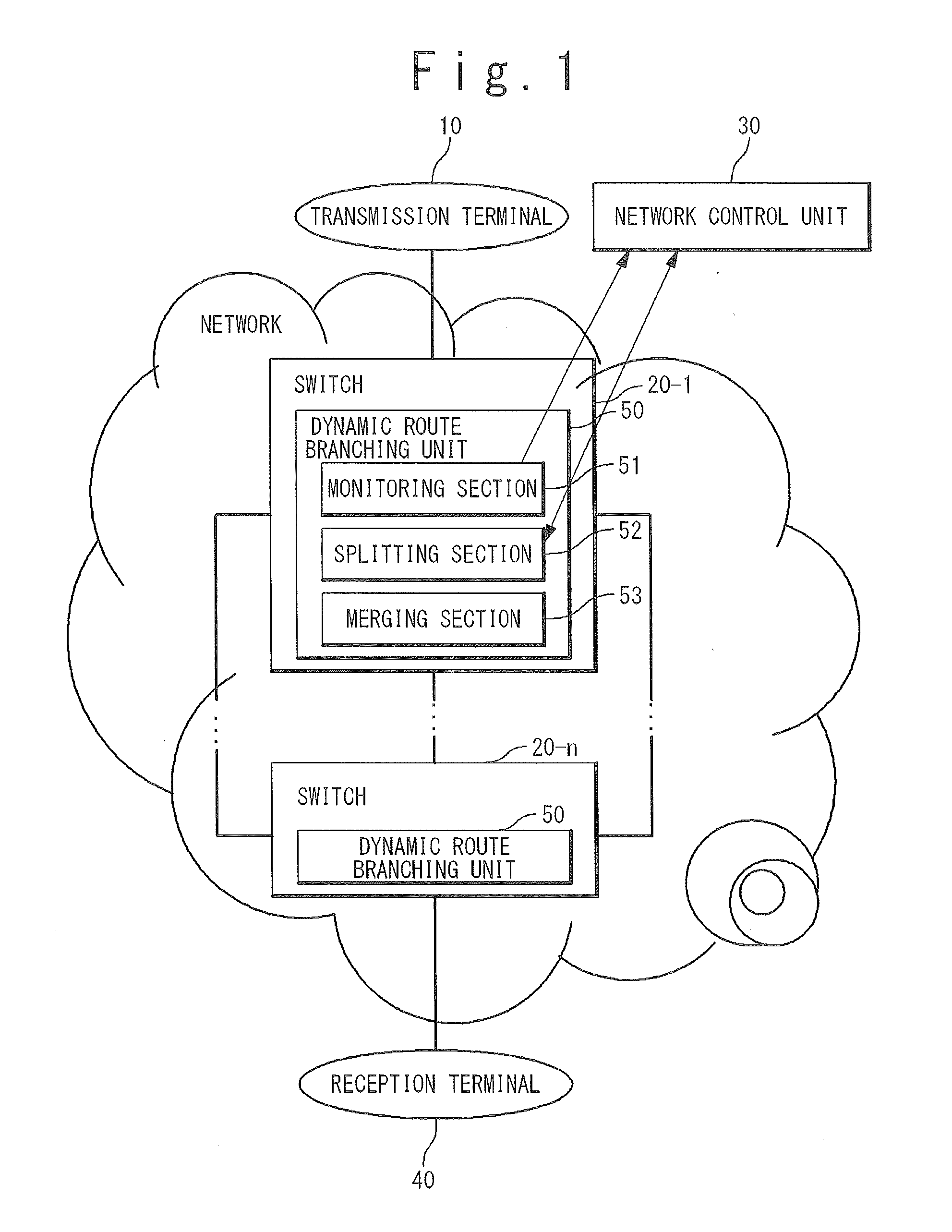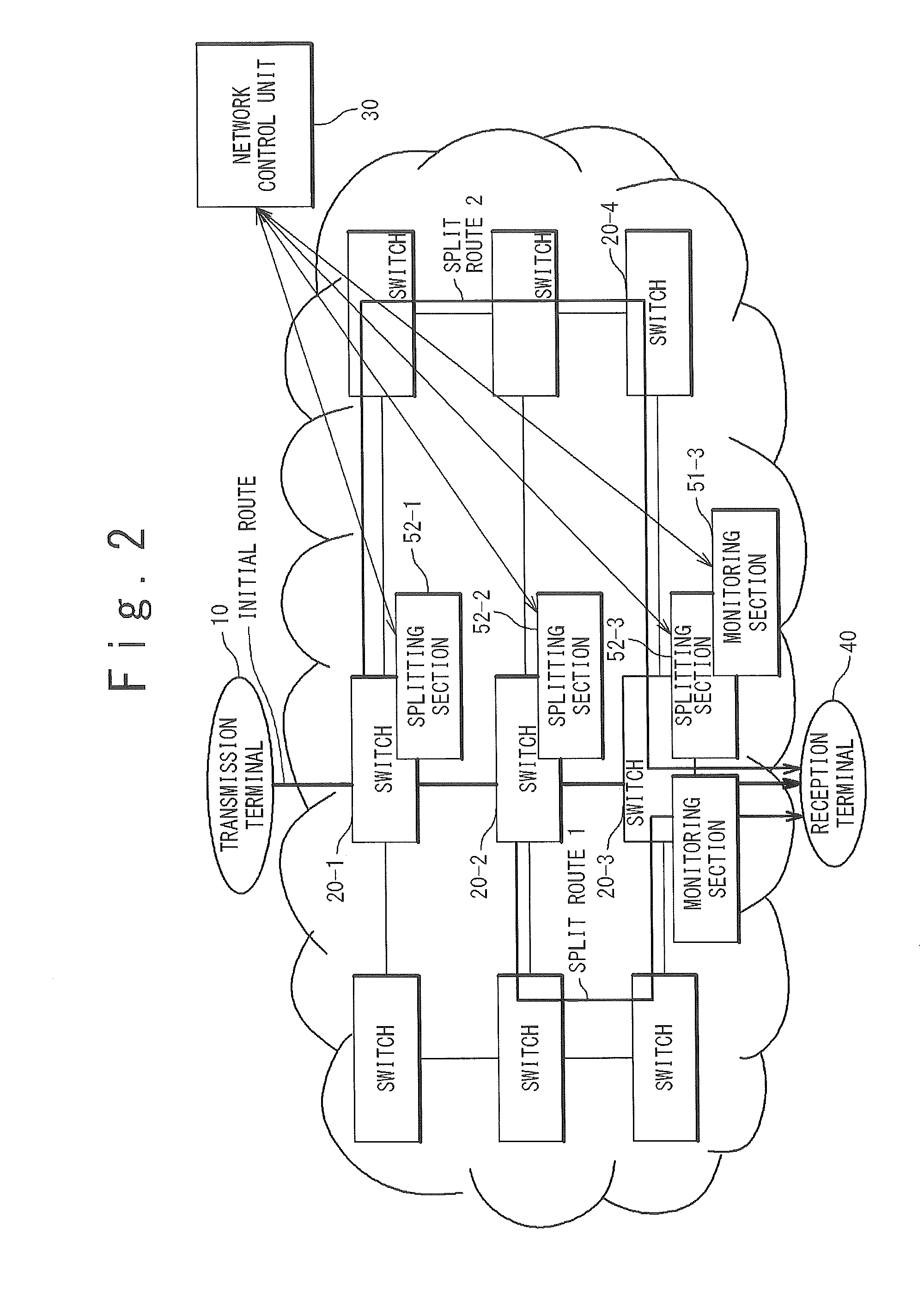Dynamic route branching system and dynamic route branching method
a branching system and dynamic technology, applied in the field of dynamic route branching system, can solve the problems of difficult to dynamically adopt a multi-path route, difficult to select an identical copy, difficult to adopt the dynamic optimal design, etc., and achieve the effect of improving the traffic reception performance of the reception terminal
- Summary
- Abstract
- Description
- Claims
- Application Information
AI Technical Summary
Benefits of technology
Problems solved by technology
Method used
Image
Examples
first exemplary embodiment
[0058]Next, the first exemplary embodiment of the present invention will be described.
[0059]In the present exemplary embodiment, as shown in FIG. 2, a case in which a monitoring process is executed only in the switch (Egress switch) 20 at the last stage which is the nearest to the reception terminal 40, of the switches 20 (20-i, i=1 to n) in the network will be described. In the present exemplary embodiment, the monitoring section 51 and the merging section 53 are provided in the switch (Egress switch) 20 at the last stage, and the splitting section 52 is provided in optional switches 20. That is, the monitoring section 51 and the merging section 53 function only in the switch (Egress switch) 20 at the last stage, and the splitting section 52 functions in all the switches of the network.
[0060]In an example of FIG. 2, the monitoring section 51 monitors the network quality of the traffic which is transmitted on an initial route from the transmission terminal 10 to the reception termin...
case 1
(Case 1)
[0064]First, a case of “the identical copy (model A) / the partial copy (model B)” will be described.
[0065]For example, when the load is high as the whole network and a loss in the network occurs in any route, or when the network is unstable so as to require a long time for restoration in case of a fault occurrence in the network, the network control unit 30 instructs the splitting section 52 to execute the identical copy (model A) or the partial copy (model B).
(Identical Copy)
[0066]In case of the identical copy, the splitting section 52 copies the entire traffic flow unconditionally and transmits them by a plurality of routes such as the initial route and a detour route (a split route). In the switch (egress switch) 20 at the last stage on the side of the reception terminal 40, the merging section 53 discards an overlapping portion from the traffic flows transmitted through the plurality of routes such as the initial route and the detour route to restore the right traffic flo...
case 2
(Case 2)
[0070]Next, a case of “flow base division / random division (model C)” will be described.
[0071]For example, when few bands exist on the whole network in a traffic system in which the loss in the whole network does not cause a problem, the network control unit 30 instructs the splitting section 52 to execute the flow base division (model C) or the random division (model C).
(Flow Base Division)
[0072]In case of the flow base division, the splitting section 52 changes the route every flow group based on flow data. In the switch (Egress switch) 20 at the last stage on the side of the reception terminal 40, the merging section 53 receives all the flow groups and transmits to the reception terminal 40.
(Random Division)
[0073]In case of the random division, the splitting section 52 changes the route randomly every packet. For example, the splitting section 52 alternately / randomly distributes the received packets to two split routes and transmits them. The same thing is applied in case ...
PUM
 Login to View More
Login to View More Abstract
Description
Claims
Application Information
 Login to View More
Login to View More - R&D
- Intellectual Property
- Life Sciences
- Materials
- Tech Scout
- Unparalleled Data Quality
- Higher Quality Content
- 60% Fewer Hallucinations
Browse by: Latest US Patents, China's latest patents, Technical Efficacy Thesaurus, Application Domain, Technology Topic, Popular Technical Reports.
© 2025 PatSnap. All rights reserved.Legal|Privacy policy|Modern Slavery Act Transparency Statement|Sitemap|About US| Contact US: help@patsnap.com



